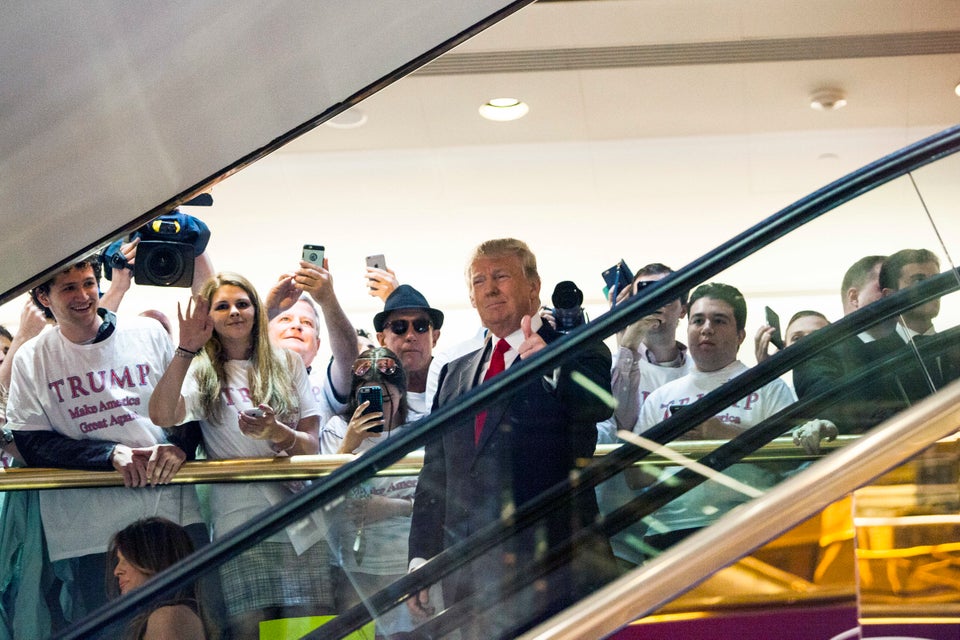WASHINGTON ― Political ads are a necessary evil these days. It’s hard to turn on the TV and not see a spot telling you about how a congressman has taken shady donations or why it’s important to get out and vote. And most voters say they wish they would stop.
But campaigns are going to keep airing them ― at least until the election is over ― for a very simple reason: The ads work.
House Majority PAC, a Democratic group, is spending big this election season, already putting in close to $40 million. And the central part of its strategy is TV advertising. It’s aired TV ads in 35 congressional districts this cycle.
Last year, House Majority PAC tested out its strategy. It teamed up with the Analyst Institute, a progressive group that measures the impact of Democratic campaigns, to study the effect of ads in Maine’s 2nd congressional district between Rep. Bruce Poliquin (R) and Democratic challenger Emily Cain. The race is considered one of the most competitive this year.
House Majority PAC aired two ads attacking Poliquin in the Bangor media market as part of this experiment from Oct. 26-Nov. 11, 2015. The Huffington Post was briefed on the findings by a person familiar with the study. Before the study, Cain and Polinquin’s vote margins were similar both inside and outside the Bangor media market.
After the run ended, however, Cain’s margin jumped to 11 points higher inside the market than outside it. That difference remained throughout surveys taken six weeks after the ads finished airing, showing a semi-lasting effect.
Polls have tightened up in the race since then, showing a virtual tie.
This cycle, there have been a few ads that have really stood out ― perhaps most notably one in Missouri’s Senate race, where Democrat Jason Kander assembled a rifle blindfolded to show that he could support gun rights but also support background checks.
The ad catapulted Kander into the national spotlight. At the time it was aired, he was about 2 percentage points behind Sen. Roy Blunt (R-Mo.), and he’s currently trailing by less than a percentage point.
“Do I think advertising helps? Yes,” Sen. Roger Wicker (R-Miss.), chair of the National Republican Senatorial Committee, told reporters in September. “Organization helps, hard work helps, micro-targeting helps. Turnout. But clearly advertising is part of it. And Mr. Kander has hired himself a great ad agency. My hat is off to him for having a clever Madison Avenue agency.”
House Majority PAC and the Analyst Institute also sent out mailers and tested digital ad buys in Maine’s second district. Direct mail increased Cain’s margin by 3 points on average, whereas they found digital ads ― on Facebook and pre-roll online videos ― had very little effect overall. But voters who received all three ― broadcast, digital and mail ― were persuaded the most.
The effect doesn’t stop at attack ads. Another common ad this time of the year is the spot encouraging people to get out and vote ― often using celebrities ― such as the ad put out recently by House Majority PAC:
In the 2014 election, the Analyst Institute and Patriot Majority tested to see whether TV and digital ads would increase turnout among members of a group they termed “the rising American electorate”: women under 35 and voters of color – and those who voted or were unregistered in 2012 and did not vote in 2010.
They tested two get-out-the-vote ads featuring comedians, created by Patriot Majority, in two congressional districts. In five cable zones, targets saw the two TV ads, and in five other cable zones, voters saw neither.
The final analysis showed there was a 2.8 percentage point increase in turnout amongst members of the rising American electorate who saw the cable ads as opposed to those who didn’t. Turnout increased by 4.4 percent for voters over 30 compared to the control group who saw no ads. They estimate that the cable zones test generated over 1,500 net new votes, including over 1,000 net new Democratic votes.
There was no evidence that the digital ads ― which were the same as the TV ads but with some added text at the end ― increased turnout.
HUFFPOST READERS: What’s happening in your state or district? The Huffington Post wants to know about all the campaign ads, mailers, robocalls, candidate appearances and other interesting campaign news happening by you. Email any tips, videos, audio files or photos to scoops@huffingtonpost.com.

